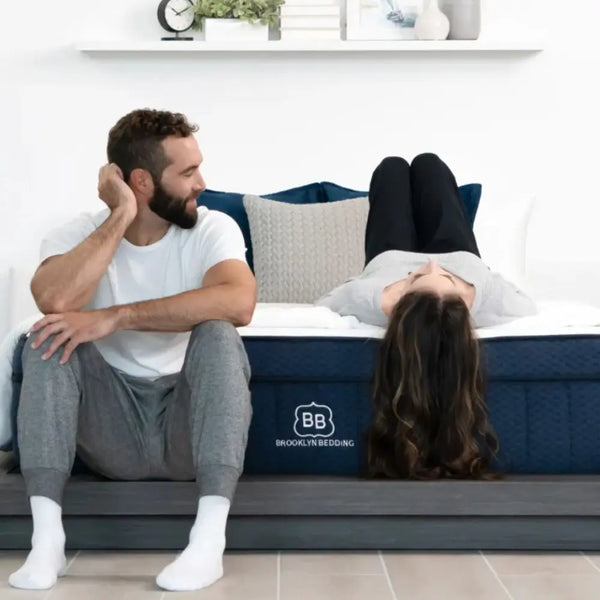The Best Sleep Position For Deep Sleep
Your sleep position plays an enormous role in the quality of your rest. If you experience back or neck pain, adjusting it might help.
The fetal position can provide relief from acid reflux, is ideal for pregnant women and may help ameliorate symptoms of obstructive sleep apnea as the airway does not collapse as quickly in comparison with back sleeping positions.
Side
Many people find the side-sleeping position advantageous for health reasons, whether sleeping in an extended “log” position or curled into a fetal one. Sleeping on one’s side promotes healthier spinal alignment from hips to head while also making breathing easier; alleviating back pain more readily as well as potentially helping prevent snoring and sleep apnea due to less airway collapse than when lying on its back can provide added health advantages.
Sleeping on their side is also recommended for pregnant women as it helps relieve pressure on the belly and facilitate blood flow to fetus, placenta, kidneys and heart. Furthermore, this sleeping position may assist those living with acidity/GERD by decreasing bloating/gas/constipation/abdominal pain and improving digestion.
However, this position can cause shoulder and stiffness pain for those suffering with neck problems. To combat this discomfort, it’s essential that pillows that support neutral spine positioning are used – for instance a medium loft pillow can help ensure the neck remains in line with its origins; alternatively placing one between hips or knees might relieve pressure off of back muscles and relieve any tension that might exist therein; finally those prone to paresthesia – numbness in hands or fingers — might benefit from placing a small pillow under their top arm in order to improve blood flow and circulation.
Back
Back sleeping is the most popular position and considered healthier for the spine, as it maintains your natural spinal curves while alleviating pressure from lower back and neck pain. Unfortunately, however, many may find the experience uncomfortable; to make sleeping on their back more bearable you can add pillows between your knees and small rolls under your neck to maintain natural spine curves without feeling discomfort during restful slumber. These types of pillows may especially come in handy if you experience back or neck pain as they provide much-needed relief during restful slumber.
Sleeping on one’s side with legs extended is another beneficial way of getting restful rest, often recommended for acid reflux sufferers and sleep apnea patients, and can help decrease snoring and sleep apnea symptoms as well. Unfortunately, this position can sometimes be less comfortable, and cause hip or back pain without the appropriate pillow; using our Cuddler made from body molding Melofoam may help alleviate some discomfort in this position by providing support under knees.
Stomach sleeping is considered unhealthy since it disrupts spinal alignment and may result in neck, back, shoulder, and joint pain. Furthermore, stomach sleeping makes breathing more difficult which may aggravate sleep apnea symptoms or acid reflux symptoms.
Stomach
Sleeping on their stomach–also referred to as the prone position or freefall position–can be one of the more uncomfortable ways of dozing, although this position can reduce snoring. Furthermore, this position puts an unnecessary strain on their neck and back, particularly those suffering from herniated discs or sciatica.
Sleeping on one’s stomach increases the likelihood of acid reflux as food travels more rapidly through your digestive tract in this position. To alleviate acid reflux symptoms and ease back pain concerns, experts generally advise trying side-sleeping instead.
Sleeping on one’s stomach can result in neck and back pain as the spine does not remain in a neutral alignment, as well as facial wrinkles and stiff shoulders. We advise those who prefer this sleeping position to adjust their mattress so as to reduce pressure on their spine, placing a pillow beneath their knees for added support, or placing a cushion beneath their knees in order to ease their backache.
Overall, side-sleeping is best for most health conditions as it helps keep the spine in an ideal alignment. For acid reflux sufferers or those experiencing back problems like herniated discs or sciatica who want more comfort than side-sleeping could consider the fetal position; otherwise, do what feels most natural to get the best night’s rest possible.
Fetal Position
Sleep can be tricky to achieve for everyone, and finding your optimal position depends on personal choice. One such position that may help is side sleeping or its variant known as the fetal position; these both offer benefits including lower back pain relief, reduced snoring and improved digestion; while for those living with conditions like obstructive sleep apnea it has also been proven to increase respiratory health benefits.
The fetal position resembles how babies curled up inside a mother’s womb, with back arched, head bent backwards, and arms drawn toward their bodies. Pregnant women prefer it as it helps improve circulation to their uterus and can prevent pressure on the liver; the position has also been used successfully by drug addicts during withdrawal as well as trauma victims to reduce stress levels.
If you find it hard to break free from sleeping in a fetal position, our Cuddler may help modify your sleeping position by providing flexible memory foam support that adjusts according to the height of your knees. Simply straddle this body pillow between your knees and hug it up top in order to maintain an informal fetal posture which may help improve spinal alignment, respiratory health and comfort while you slumber.










